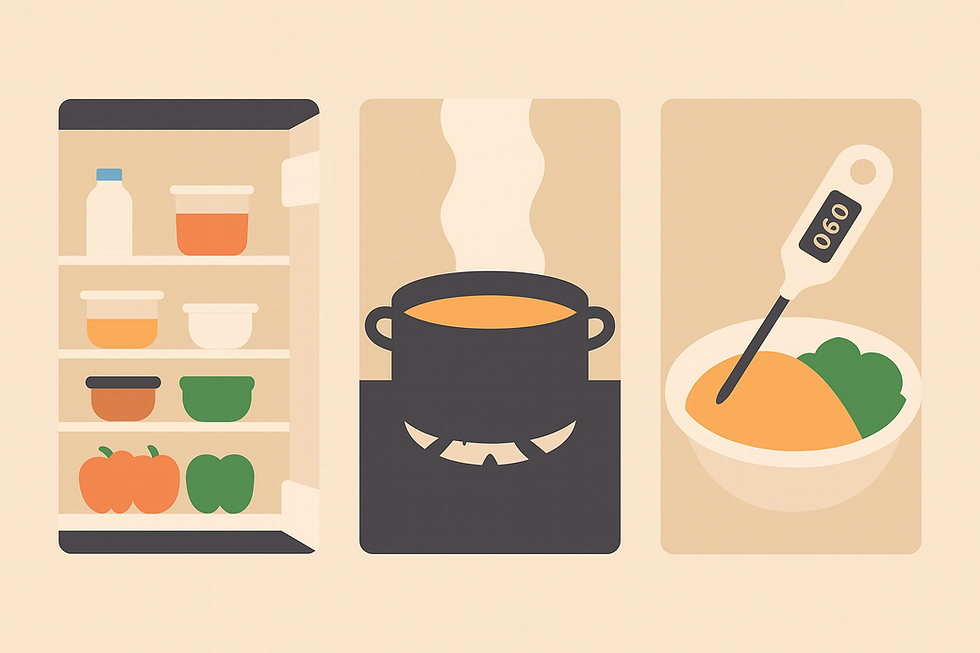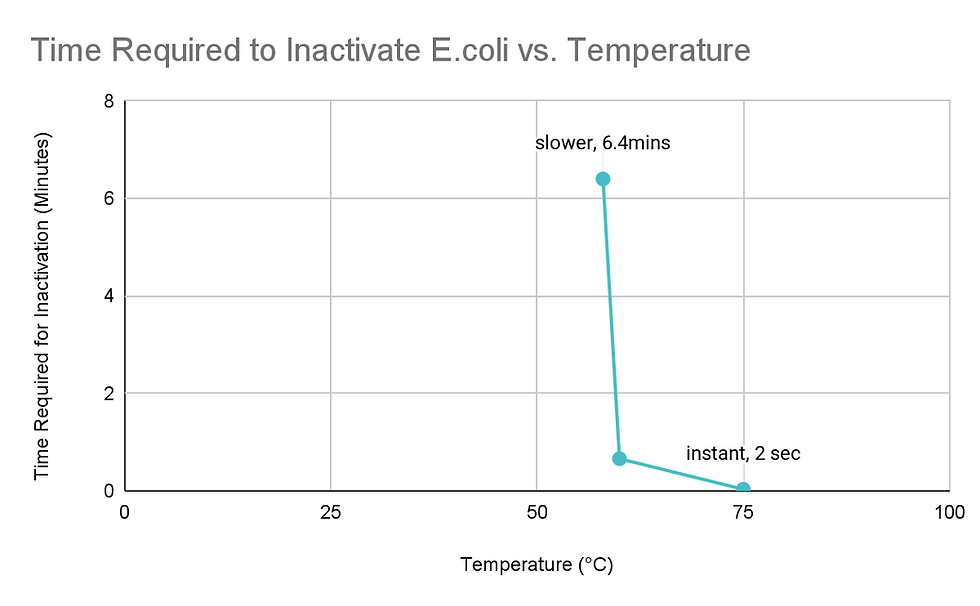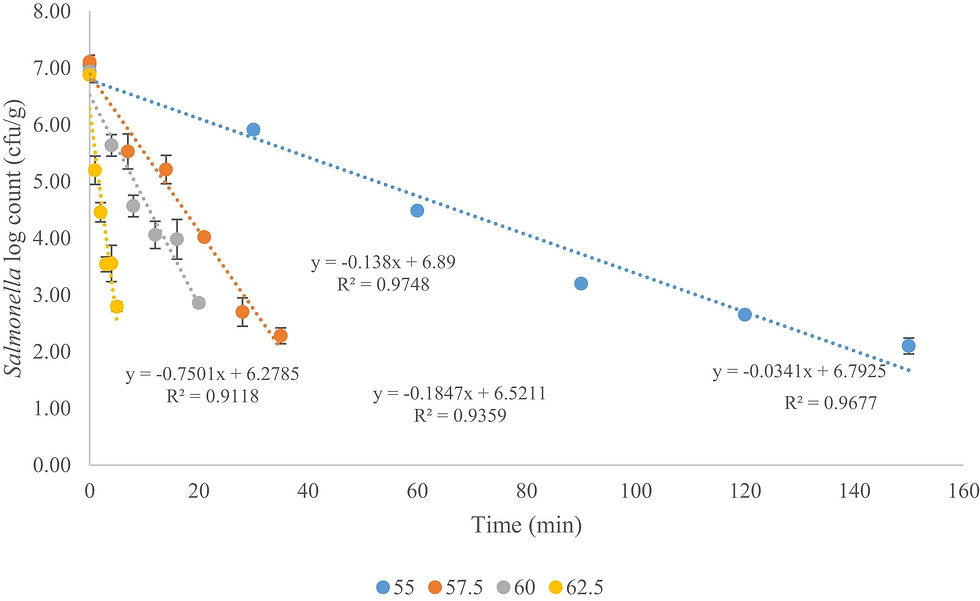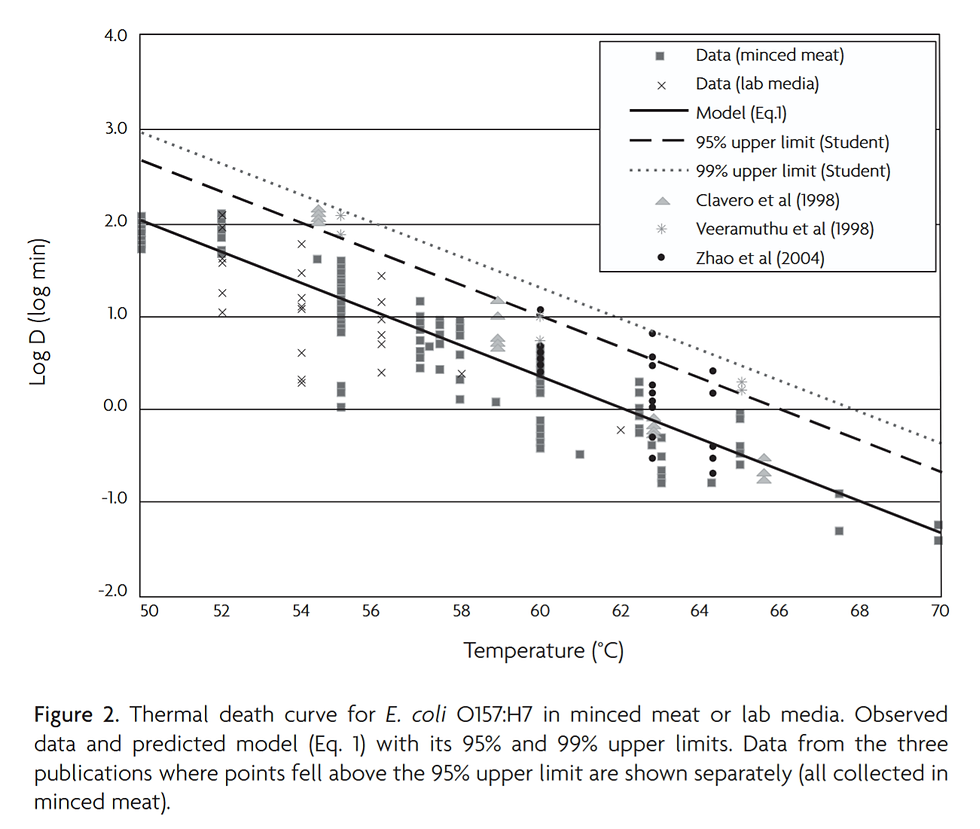Insights From Bacterial Science To Store Your Food Safely For Meal Pep
- Harshal

- Aug 4
- 9 min read
Why Cooling And Storing Matter More Than Cooking
I knew the best practices for food storage, but not the scientific reasons. Traditional habits — like leaving food out all day instead of refrigerating food — often contradict modern safety guidelines. I researched the reasons for the guidelines and wrote this post.
Read this post in a pyramid format:
Myths debunked and quick kitchen fixes
Charts showing how bacteria grow (and die)
FAQs on reheating, fridge, and freezer safety
An appendix on common foodborne bacteria
I spent 5 hours and 20 minutes researching and writing this. You need 5 minutes to read this, excluding the Appendix.
I updated my method to measure writing time to include time outside of Google Docs - including writing AI assistant, research AI, graphs, and flowcharts.

Related:
Even food that looks and smells fine can be unsafe. This post focuses on the hidden risks—how bacteria thrive when storage goes wrong.
I have organized (existing, not new) credible data and visuals to help it intuitive to make safer choices.
Summary: Use These Food Safety Habits in Your Kitchen
Use these steps to cook, cool, store, and reheat food safely:
Cool food quickly after cooking. Spread it on plates and place them on ice packs or near a fan. Prevent bacteria from multiplying at room temperature.
Store food in the fridge within 1–2 hours of cooking. Use containers with lids.
Reheat food only once. Either throw out the leftovers or reheat food only once and eat it. Don’t rely on smell or looks—most harmful bacteria are invisible. Never re-freeze reheated food.
Thaw frozen food in the fridge. Avoid thawing food on the counter.
Wash hands, knives, and lids between use. Don’t let cooked food get re-contaminated from surfaces or air.
Keep the fridge below 4 °C. Clean the seals every month to prevent fridge-loving bacteria.
Understanding how bacteria grow will change the way you handle food.
Research Busts These Common Myths
“It’s okay to reheat food multiple times.”
Myth. Each reheating cycle gives bacteria a chance to grow and produce toxins.
“If food looks and smells okay, it’s safe.”
Myth. Harmful bacteria are usually invisible and odorless.
“Freezing kills bacteria.”
Myth. It only pauses their growth.
“Dry foods like rice and pasta are safe to leave out.”
Myth. Once cooked, they’re high risk.
“Bacteria don’t survive in hot climates.”
Myth. Bacteria actually multiply faster between 30–40°C than at 20°C. They only die above 45°C—basically, cooking temperatures.
Sample Risk Scenarios And Recommended Actions
Situation: Cooked rice left out for 4 hours. → Risk: Toxin that isn’t destroyed by reheating. → Action: Discard it
Situation: Thawed chicken left in the sink overnight. → Risk: Bacteria growth in the danger zone. → Action: Discard it
Situation: Fridge temperature is 8 °C. → Risk: Listeria can grow, doubling every 1.5 days. → Action: Adjust fridge to below 4 °C
Situation: Reheated leftover pasta cooled and reheated again. → Risk: Heat-stable toxins. → Action: Reheat only once; discard after that.
Situation: Uncovered food cooling on the counter for hours. → Risk: Bacteria from air, hands, and utensils reseed the food; slow cooling allows spores to activate. → Action: Cover food immediately and cool quickly using ice packs or shallow containers.
Bacteria Types And Population Changes
In general,
Cooking kills most bacteria.
Cold slows them down.
Specifically for bacteria in your kitchen:
Fridge and freezer temperatures pause bacterial growth—but some bacteria still multiply in the fridge.
Others release toxins that stay in food even after cooking.
See the appendix for details on foodborne bacteria.
I tried to show bacterial growth and death on the same chart but realized their metrics differ:
Growth = Time it takes for bacteria to double (100% increase)
Death = Time it takes for bacteria to drop by 90%
“At 37 °C the cells double every 35 min; at 60 °C, the same culture loses 90 % every 40 s.”

Bacterial Growth
Bacteria thrive in warm, moist conditions. Temperature is the biggest factor affecting their growth.
In the fridge or freezer, growth slows dramatically or stops. But once food enters the danger zone — between 5 °C and 60 °C — bacteria multiply rapidly. See the appendix for detailed bacterial growth charts.
I converted scientific growth charts into population change per hour, to show the real-world impact. At 37 °C, bacteria can multiply by over 200% in just one hour.

Once food enters the danger zone, it becomes unsafe fast—even if it looks or smells normal. Never leave perishable food at room temperature for more than 1–2 hours (assuming room temperature is around 20 °C). This time is cumulative, not per occasion, e.g., 1 hour on the counter + 1 hour later = 2 hours total.
If you live in hotter climates like India, where room temperatures reach 30–40 °C, the safe window is even shorter.
Another way to understand bacterial growth: how long it takes for the bacteria on your food to double.

Cooking To Kill Bacteria
Cooking at high temperatures kills bacteria quickly. Low-temperature cooking methods like sous vide also work, but they require more time.

Food safety researchers study how long it takes to reduce bacteria populations by specific amounts—such as a 90% (1-log), 99% (2-log), or 99.9999% (6-log) reduction. These time-temperature charts help you understand how heat kills bacteria in food.

Freezing, Thawing, And Refreezing: What’s Safe?
I walkthrough common food-handling scenarios: storing food in fridge, freezer and reheating in the microwave or cooktop. I consider oven, cooktop, and microwave as equivalent heating methods if you heat food evenly to 70°C. I made mermaid diagrams to illustrate this:

Does Cooking Reset Your 2hrs Food Safety Timer?
Cooking kills most bacteria, but it doesn't make food sterile. Here's what to watch out for:
Spores survive and can activate if food cools too slowly. Think of spores as bacterial seeds that grow when conditions are right.
Toxins may remain even after bacteria die.
Sterile food is rare - microorganisms jump onto cooked food very quickly.
Why Not Reheat Food Multiple Times?
Reheating food more than once increases the risk of bacterial growth and toxin buildup because of:
Repeated time in the “Danger Zone” (5°C–60°C) where the paused bacteria will grow fast.
Ineffective reheating, especially with microwaves set to high power for short durations, can allow bacteria to survive.
Contamination from air or utensils each time the food is handled.
Does Fridge Pause Your Bacteria?
The fridge slows most bacteria, but Listeria continues growing, doubling every 1.5 days—even at cold temperatures.
Why Do Bacteria Return After Cooking?
Even after cooking kills bacteria, food does not remain sterile for long.
1 - Some bacteria survive cooking as spores. Spores from bacteria like Bacillus cereus can survive heat. If food cools too slowly, spores “wake up” and grow.
2 - As soon as food leaves the stove, it’s exposed to:
Airborne bacteria
Hands and utensils
Contaminated knives, lids, or spice jars
3 - Listeria is found in 0.5%–6% of household fridges, often on shelves, drawers, or seals.
So storing food safely isn’t only about cleanliness. It’s about controlling time and temperature after cooking.
Can You Trust The Sniff Test?
Don’t use the sniff test for food with a “use-by” date. You can’t smell the bacteria that cause food poisoning, so the test isn’t reliable.
You may use the sniff test for food with a “best before” date — but only to check for quality, not safety.
Related:
Appendix - Common Foodborne Bacteria
I collate more details on common foodborne bacteria and how they differ—where they live, how they survive, and what makes them harmful.
Understanding these details helps you handle food more safely.
Salmonella
Found in raw or undercooked eggs, poultry, meat, and sometimes produce.
Killed by proper cooking.
Escherichia coli (E. coli)
Some strains cause illness.
Commonly linked to undercooked beef, unpasteurized milk/juice, and contaminated produce.
We use E.coli’s data in many graphs above.
Spore-Forming Bacteria
Spores are like bacterial “seeds” that survive boiling, drying, and even some disinfectants. They can withstand cooking and harsh conditions, then germinate and multiply if food is improperly cooled or stored.
They are responsible for some dangerous foodborne illnesses, including botulism (from C. botulinum) and certain types of food poisoning.
If conditions are right—such as slow cooling or warm storage—spores can "wake up," multiply, and produce toxins that may not be destroyed by reheating.
Such bacteria are often in starchy foods like rice and pasta. Their toxins are not destroyed at cooking temperature, so its important to not keep such food at room temperature for long time.
Campylobacter
Food poisoning from undercooked poultry and unpasteurized milk.
Causes diarrhea, cramps, and fever.
Listeria monocytogenes
Notable for its ability to grow at refrigerator temperatures. It doubles in 1.5 days even in the fridge at 4 °C.
Found in unpasteurized dairy, cottage cheese (paneer), ready-to-eat meats, and soft cheeses.
Especially dangerous for pregnant women, newborns, elderly, and immunocompromised people; can cause miscarriage or severe illness.
Staphylococcus aureus
Produces heat-stable toxins that survive cooking, even if the bacteria are killed.
Common in foods handled a lot e.g. salads, sandwich spreads.
Causes rapid-onset vomiting and diarrhea.
Shigella
Spread by poor hygiene, often in foods that require a lot of handling (salads, dairy).
Causes dysentery-like symptoms.
Cholera
Cholera-causing bacteria and related species are found in raw or undercooked seafood.
Severe diarrhea and dehydration.
Other Bacteria
Yersinia enterocolitica: Can grow at fridge temps, found in pork and sometimes dairy.
Bacillus cereus: Causes two types of illness—one with vomiting (from rice/pasta), one with diarrhea (from meats, sauces); both linked to improper storage.

Appendix - Bacteria growth and death charts
The chart below shows the maximum specific growth rate of bacteria (how quickly they can double) as temperature rises. You’ll see that growth explodes between 25°C and 40°C—common room temperatures.

A simple heuristic is to not keep food in the danger zone for more than 1-2 hours. The below visual captures the danger zone between 5°C and 60°C.


Researchers measured Salmonella population reduction by heating food at different temperatures.

Experimental studies on E. coli’s population reduction showing the time taken for the population to reduce at different temperatures. Below, we see population reduction of water-related pathogens in domestic hot water systems.

References
Listeria incidence in fridges:
Contamination of Household Refrigerators by Listeria Species in Ahvaz, Iran study of 180 fridges in Iran
Time-temperature profiles and Listeria monocytogenes presence in refrigerators from households with vulnerable consumers - ScienceDirect study of 53 fridges in Romania, Portugal, French, UK, and Norway
Analysis of older adults' domestic kitchen storage practices in the United Kingdom: identification of risk factors associated with listeriosis - PubMed study of 100 fridges in Wales in UK.
Temperature distribution and prevalence of Listeria spp. in domestic, retail and industrial refrigerators in Greece - PubMed study of 136 fridges in Greece
Food Safety guidelines and research:
Bacteria growth:
Spore-forming bacteria:
Bacteria death rates:








